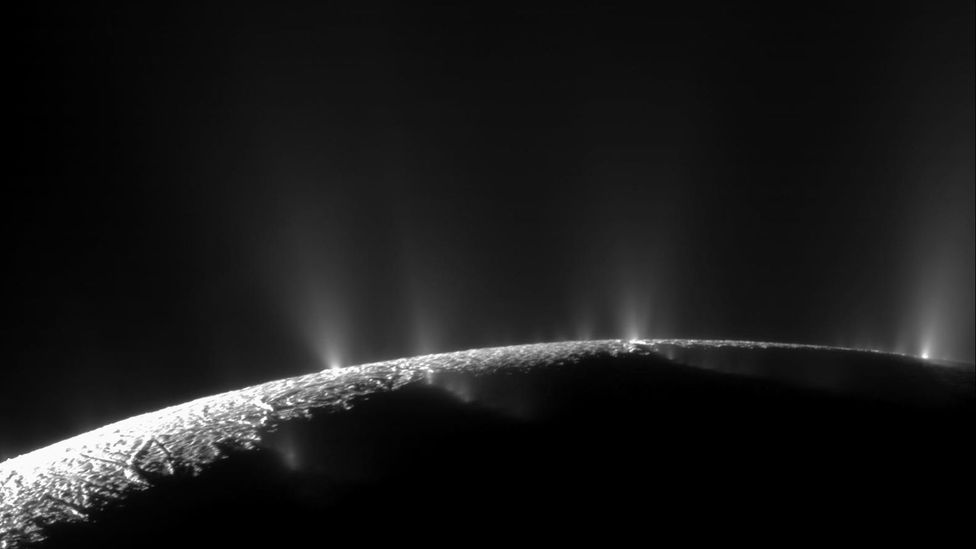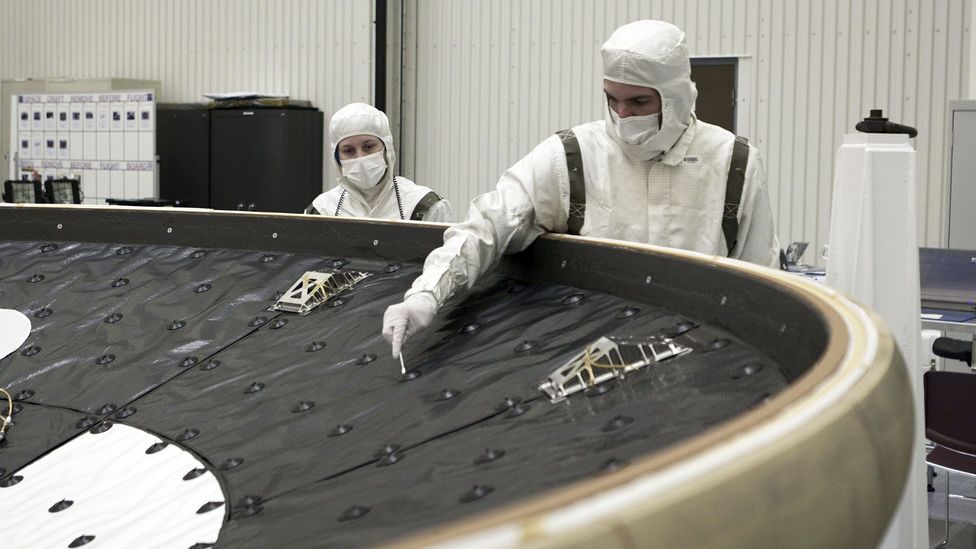
(IMAGE CREDIT: EMMANUEL LAFONT)
SEVEN THINGS SCIENCE HAS REVEALED ABOUT ALIENS SO FAR
BY: BBC FUTURE TEAMORIGINAL SITE: BBC NEWS
Lunar bugs to ocean moons: seven things science has revealed about aliens so far. Extraterrestrial life could really be out there among the stars – here is some of what we have learned thanks to science.
Through the years, BBC Future has covered a wide range of stories about what life from other worlds might look like and what the implications of discovering extraterrestrials might be. As we kick off a week of special coverage about aliens – all to mark the upcoming 60th Anniversary of the BBC's most famous alien lifeform, Doctor Who – we have picked some of our favourite extraterrestrial facts.
Our lucky scrape with life from outer space
The Moon, as we now know, is a dead place. But before the Apollo 11 astronauts landed there, we couldn't be 100% sure. In fact, there was the serious possibility that the three men on the mission could have brought space bugs back with them.
When the Apollo capsule landed on the sea after its lunar journey, there were strict anti-contamination procedures in place to prevent alien life spreading on to Earth. The astronauts were supposed to stay inside, with the door locked, until they entered quarantine. But it was hot and uncomfortable, bobbing around on the waves, so they were allowed to open the door.
If lunar bugs had hitched a ride, they could have seized this opportunity to enter the Pacific Ocean. It could, in principle, have proved catastrophic for life on Earth. Luckily for us, that didn't happen.
Read more about the moments that could have accidentally ended humanity in this article by Richard Fisher
Ocean moons may be the best places to find alien life
Several moons within our solar system are believed to have seas uncannily similar to our own – salty and heated by hydrothermal vents. Now, scientists think these lunar oceans could be the best places to search for extraterrestrial life.
Jupiter's moon Europa, for example, is thought to contain more liquid water than all of Earth's oceans combined, while Saturn's moon Enceladus emits huge water plumes that hint at hydrothermal vents on its ocean floor.
If these prove to be similar to deep ocean vents found on Earth, it could be significant. These are one of the strongest candidates for where life on Earth is believed to have begun .
Other moons with the potential for life include Jupiter's Callisto and Ganymede, and Saturn's Titan. Several major space missions are being planned over the next decade to search for hints of life in alien oceans. But what kind of life might we discover?
To find out what life in alien oceans might look like , read this article by Mico Tatalovic.

The Cassini spacecraft captured plumes of water ice being ejected geysers on the surface of Enceladus (Credit: NASA/JPL/Space Science Institute)
Why we are unprepared for an alien contact
Alien life has not yet been discovered, but if it was, would we treat it well? Fictional scenarios have not offered much hope, with extraterrestrials imagined as less-than-human and subordinate. Even among the existing human inhabitants of this planet, universal rights too often go unenforced.
Yet ethicists are now considering what would happen if alien contact was ever made. Establishing their intelligence and sentience would be one important initial step. Ascertaining their intent would be another.
And, especially if they already possess the technology to land on Earth, we may also need to hastily ask what rights they would be willing to afford us in return?
Read more about the missing plan for alien first contact in this article by Tamlin Magee.
Not all "alien" signals come from outer
space
Astronomers spend a lot of their time looking up, scanning the heavens for signals that can give them clues about distant stars, exoplanets and galaxies. But sometimes, they also need to lower their heads and look closer to home.
In 1998, scientists in Australia's Parke's Observatory in New South Wales discovered strange radio bursts just a few milliseconds long which were detected over several weeks. Strangely, they only seemed to occur during office hours on weekdays.
Then in 2015, scientists managed to trace the source. The culprit was target="_blank"the observatory's microwave . The bursts were recorded during periods when researchers were heating up their food. Opening the microwave oven before it had pinged led to brief emissions of radio waves of around 2.4GHz that were picked up by the observatory's antenna.
Read more about the how investigations into UFOs and "alien" signals are now attracting serious scientific scrutiny in this article by Zaria Gorvett.

Spacecraft such as Nasa's Mars Science Laboratory undergo intense cleaning during assembly to keep them as free of microbe hitchhikers as possible (Credit: Nasa/Glenn Benson)
There could be Earthlings on Mars already
Before they are launched, spacecraft are kept scrupulously clean to avoid any contamination with organisms that then be carried off our planet. Orbiters, landers and rovers are pieced together in clean rooms and following strict protocols , which include disinfecting every component before assembly.
But it is almost impossible to keep microbes off the surfaces of spacecraft completely . Instead, they are kept as low as possible and it is hoped the inhospitable environment in space will kill off anything that remains.
Some organisms, however, have been found to be capable of surviving the cleaning process and a trip into space. Scientists have even found DNA from microbes with resistance against radiation, cold environments, and desiccation in clean rooms where some of the robotic rovers trundling around on the surface of Mars were built. It raises the question - could we have sent life to Mars?
Read more about how spacecraft could have accidentally carried microbes to Mars in this article by Christopher Mason.
One idea is that Titan might contain 'vinyl life' – cells built from the cyanide found in its atmosphere
UFO sightings follow macroeconomic shifts
During the Covid-19 pandemic, scientists noticed a surprising trend – there was a major spike in sightings of unidentified flying objects (UFOs) across the US . Confined to their homes, people suddenly had more time to scan the night's sky. Were all those extra eyes perhaps detecting something we had missed before? This was one possible explanation.
Instead, in a research paper about their findings, the researchers propose another explanation: the public were simply devoting more attention to suspicious objects during lockdowns.
Since the US government's first assessment of UFOs in 2021 – or unidentified anomalous phenomena (UAPs) as they are now known – there has been a surge in sightings. Last year alone there were more than 350 , compared to 144 for the entire 17-year period before. Some commentators have dubbed the phenomenon " a new age of UFO mania ". Nasa recently started investigating these reports for the first time.
To find out more about how Nasa distinguishes between conspiracy theories and incidents worthy of investigation , read this article by Zaria Gorvett.
Life on Titan, but not as we know it
Around 746 million miles (1.2bn km) from Earth, is a surprisingly habitable mass of rock, with vast liquid oceans and a thick atmosphere.
Deep within these seas, microorganisms may be stirring. It's thought that Saturn's largest moon, Titan, might harbour conditions suitable for life – both in the water oceans thought to be hidden there underground and in the seas composed of liquid methane that bathe its surface.
One idea is that Titan might contain "vinyl life" – cells built from the cyanide found in its atmosphere. Now scientists are hoping to get some answers. Nasa has proposed sending a submarine to explore the methane ocean at its north pole, possibly during Titan's next summer in 2047.
AWFSM CATEGORIES
Activism AI Belief Big Pharma Conspiracy Cult Culture Deep State Economy Education Entertainment Environment Faith Global Government Health Hi Tech Leadership Politics Prophecy Science Security Social Climate Universe War
